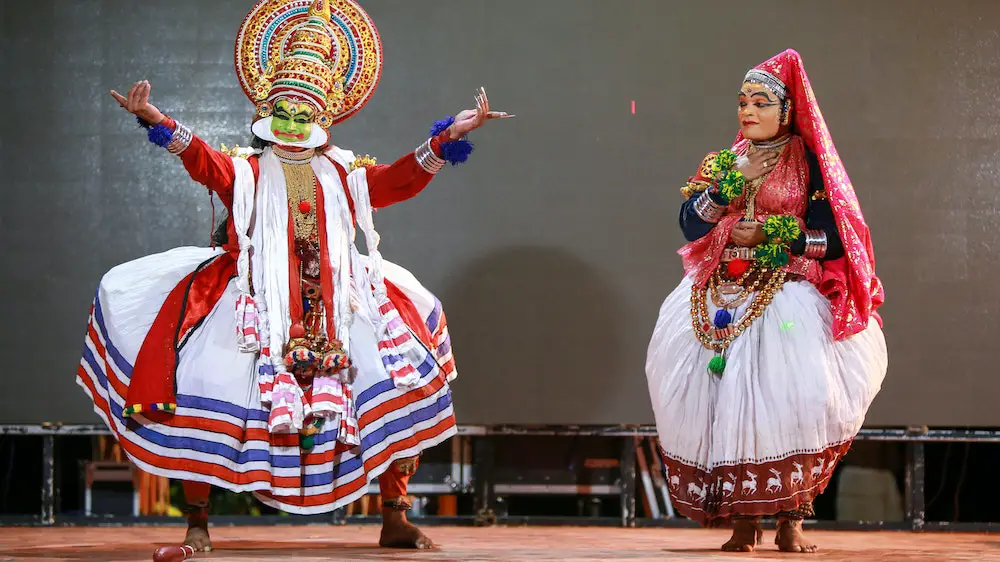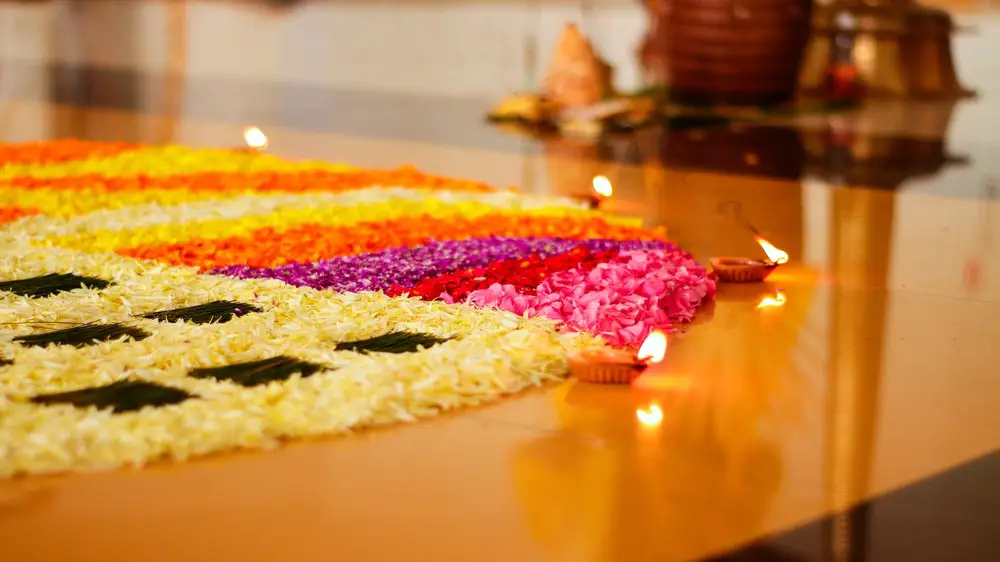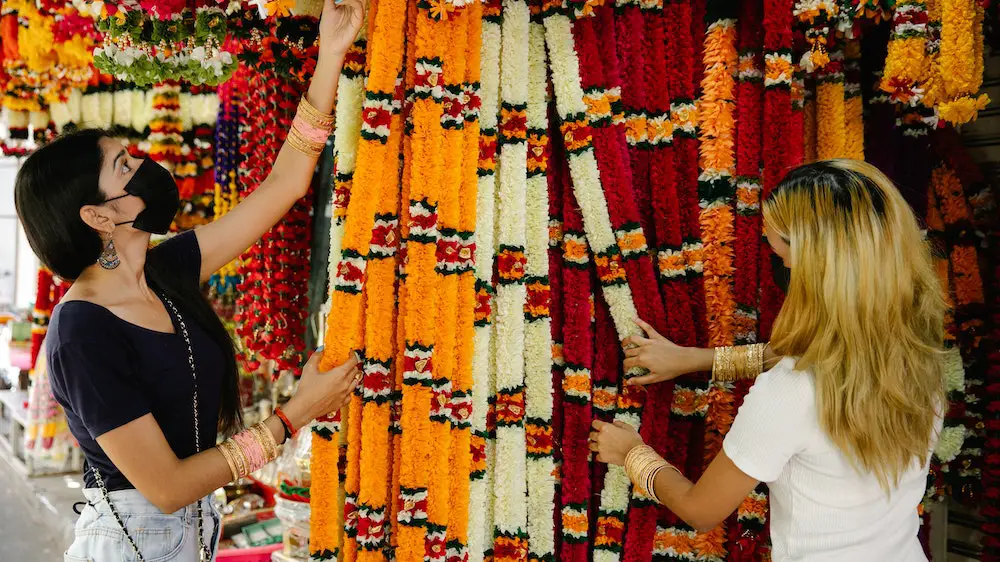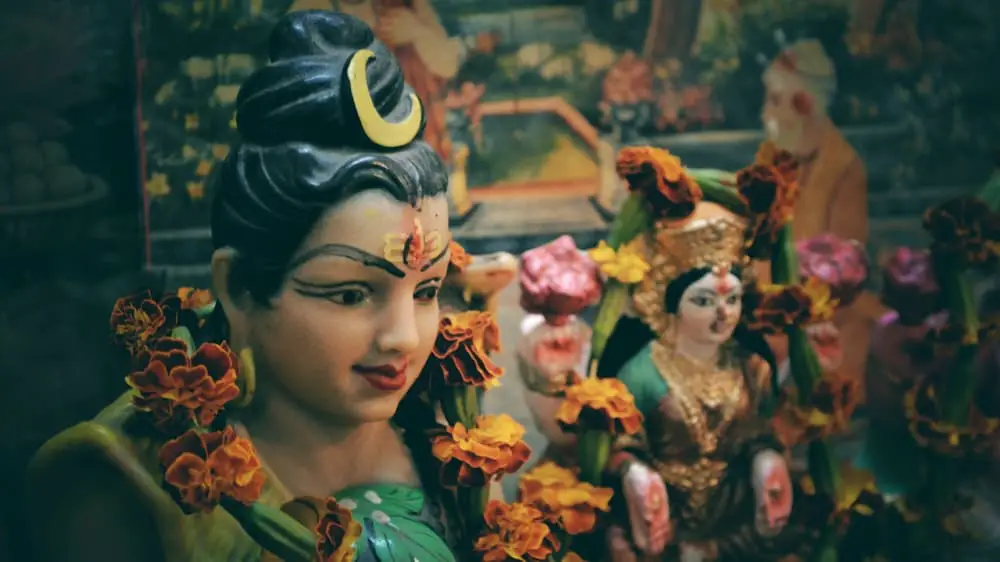Onam is a festival celebrated by the people of Kerala, India. It is a harvest festival that falls in the Malayalam month of Chingam, which usually corresponds to mid-August. The festivities last for 10 days and are a time for family gatherings, picnics, and general merriment.
1. Highlights About Onam
- It is a festival celebrated on account of the homecoming of King Mahabali to earth.
- Onam is a festival full of floral decorations known as pookkalam that are placed on the ground in front of their houses to welcome King Mahabali.
- The main cuisine of this festival is Onam Sadhya. It is a full vegetarian meal served on a banana leaf consisting of various traditional meals.
- Onam is one of the most important festivals of Kerala marking endless joy, prosperity and happiness in the state.
2. Different Days Of Onam and celebration
- Day 1 – Atham: People begin the Onam festivities with Pookalam/ floral decorations to welcome their king.
- Day 2 – Chithira: Visiting temples and establishing earthen mounds representing King Mahabali along with Pookalam designs.
- Day 3 – Chodhi: 3rd day of the Onam festival marks the beginning of festival shopping. On this day people buy jewellery and new clothes for each other. Traditional clothes are purchased and worn on this day. Women wear Kasavu Sari whereas men wear Mundu. Young girls buy and wear Pattu Pavadai, the traditional clothing of the state.
- Day 4 – Vishakam: The day when beautiful folk art named Pulikali is performed. Dressing up as a tiger and hunter and performing cultural plays are the main highlight of this day.
- Day 5 – Anizham: The day when the world’s most famous snake boat race called Valamkali is held. There are different teams being part of the race and their supporters come to cheer them up.
- Day 6 – Thriketa: This is the day when Keralites who have shifted to different places, visit their ancestral homes. They meet their loved ones and exchange gifts with each other.
- Day 7 – Moolam: Moolam is the 8th day of Onam. This is the day when families and relatives visit each other. Therefore, on this day a smaller version of Onasadhya is prepared.
- Day 8 – Pooradam: On this day small statues of Mahabali and Vamana are taken around the house and put in the centre of the Pookalam. This is the day when Mahabali is finally invited to the sit houses of people.
- Day 9 – Uthradam: If we speak of legends, then it is believed that Uthradam is the day when King Mahabali arrives on Earth. Therefore, people clean up their houses and preparations reach their peak.
- Day 10 – Thiruonam: The final day of Onam when people wear new clothes and light up their houses. In the evening, there are beautiful fireworks along with rice flour batter applied on entrances as a welcome sign. Onasadhya is prepared on this day. A huge number of donations are also made on the day. Keralites sum up the festival with loads of music and dance.
3. How do people celebrate Onam
People celebrate Onam in various ways. Some people wear new clothes and visit their friends’ homes or go to temples or churches to offer prayers. Children enjoy themselves by playing games like Kolukkol (a game similar to hide-and-seek) or kite flying.
Onam celebrations are held in Thirakkara which is located at a distance of 10 km from Kochi. It has a divinity of Thirakkara Appan. Thirakkara was the capital of the state during the reign of King Mahabali. Hence, every year Onam festivities are celebrated here with lots of zeal and enthusiasm.
Now let’s talk in detail about the Onam festival preparations and different types of celebrations.
3.1 Pookalam
As mentioned above Pookalam is floral decoration and is the base of the whole festival. People love to celebrate the return of King Mahabali by welcoming him with flower bed decorations. These floral decorations have a total of 10 different sets depicting every day of Onam starting from ‘Atham’ and ending on ‘Thiru Onam’.
These flower decorations are signs depicting secularism in the state along with prosperity and love among people.
3.2 Snake Boat Race
The month of Onam concludes with various fun activities. Out of which, snake boat races are a must. This festivity is performed in the Aranmula Parthasarathy Temple.
So, August and September are the best months to visit Kerala.
3.3 Onasadhya
Onasdhya is a typical Kerala cuisine including of total 25 dishes. Onasadhya is prepared on the last day of a festival which is Thiru Onam. The grand feast made on the day is served on a gigantic banana leaf marking the prosperity during the reign of King Mahabali. People of all groups and cader come along together and prepare the same meal depicting the unity in the society.
Sarkaravaratti, banana wafers, salt, and fries are served on the right side of the pappad next to which lie the ginger lime, and mango pickles.
Vegetarian items like pavakka, ullikitchadi, and Kitchadi (made up of banana and pineapple pieces) are placed next. Thoran (a mixture of vegetable curries) is served after this variety. After the meal, payasam is served as a dessert.
3.4 Pulikali
Pulikali is folk art by well-trained trained performers to entertain the local people. The artists dance excitedly and perform hunting moves with the beats of musical instruments.
This art form is also known as Kaduvakali.
Pulikali also stands for ” play of tigers”.
Therefore, on the fourth day of Onam which is Vishakam; dancers get to paint themselves as tigers and hunters. They also perform folk arts on traditional songs. It is an Indian festival full of music, dance and plays.
These little festivities of the festival are a great tourist attraction for the state.
How to celebrate the festival as a traveller
If you are a traveller then there’s a lot of experience that you can gain from the festival. You can participate in local dances and have Onasadhya at temples. You can also check out the holiday boat games which consist of many kinds of boat races including paddled longboats, snake boats, and other traditional boats. Vanchipattu, or the boat song, is performed during the boat race to entertain the crowd and encourage the canoers.



